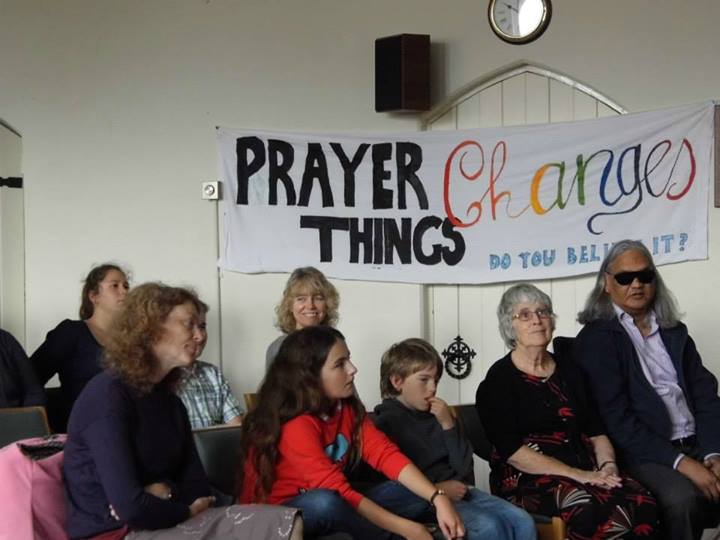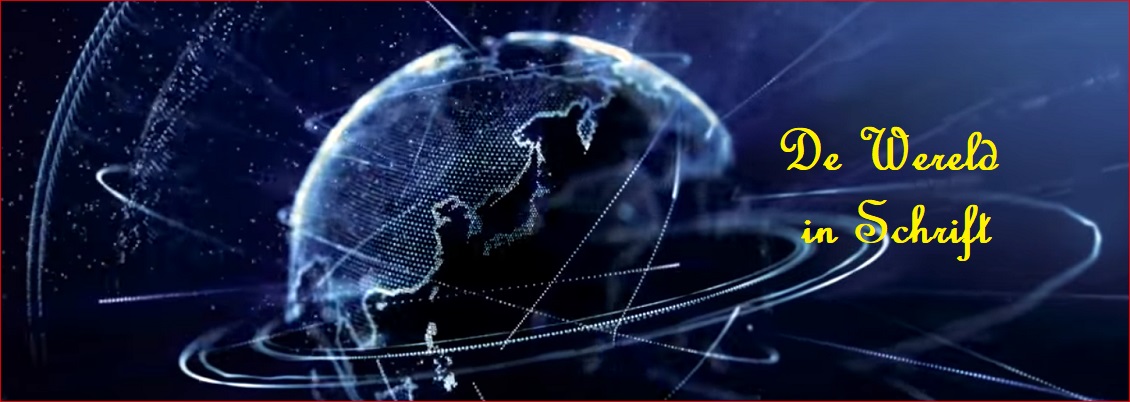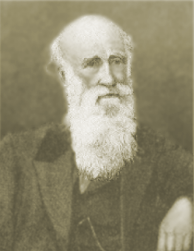As a youngster I liked a lot the work Pope John XXIII did and I went to new vital congregations of charismatic Christians where we came together reading the Bible , singing and praising the Lord. It looked that the Roman Catholic church was going into a new age.
Following the lengthy Second Vatican Council, called by Pope John XXIII in 1959, the Church had made a determined effort to modernize some of its doctrines and practices. For ages members of the church, no matter which language they spoke had to confine to the ‘Missal’ with the service text in Latin. At last the Roman Catholic Church brought the church closer to the people, offering them a liturgy in their own language. Priests, who traditionally faced the altar during services, had been instructed to face their congregations and invite them to participate. In place of a stultifying focus on ancient dogmas and ceremonies, there was a return to the actual teachings of Jesus, which were being interpreted in increasingly liberal and egalitarian ways.

Pope John XXIII’s coronation on 4 November 1958. He was crowned wearing the 1877 Palatine Tiara. (Photo credit: Wikipedia)
John XXIII’s successor in 1967, Pope Paul VI at first gave the impression to be willing to come closer to the people as well. He issued the “Populorum Progressio,” an encyclical on “the development of peoples,” which asserted that the global economy should serve the many, not just the few. Updating the Church’s teachings to take account of widespread poverty and inequality, the Pontiff recognized the right to a just wage, security of employment, and decent working conditions. He even recognized the right to join a union. Today we still are a long way from it.
Though that new pope and his successors started turning back all the measures John XXIII had brought in to get new blood into the church. Though strangely enough at first the priests who preferred to continue in the Latin tradition were scummed. Suddenly they were not worthy any more to be part of the Roman Catholic Church. This did lots of people wonder about the teachings of that church and the seriousness of their commitment to the Creator God of gods.
When Pope John Paul II arrived in 1979 all the modernization project of the previous twenty years was put in the bin and the Catholic Church of Rome became a bastion where a place in the hierarchy and power was important.

President Ronald Reagan and First Lady Nancy Reagan with Pope John Paul II, June 7, 1982 (Photo credit: Wikipedia)
At the Latin American Bishops’ Conference, held in Colombia in 1968, the attending bishops had proposed to combine the teachings of Jesus Christ with those of Karl Marx as a way of justifying violent revolution to overthrow the economics of capitalism. The bishops interpreted every biblical criticism of the rich as a mandate to redistribute wealth from the haves to the have-nots, and every expression of compassion for the poor as a call for a social uprising by peasants and workers. The time of affirming the rights of the poor and accusing industrialized nations of enriching themselves at the expense of Third World countries came to an end with the last two popes.
It has been no secret that Catholicism was unambiguously hostile to socialism and communism, though Christ Jesus may have been the first communist avant la letre.
Rome did not want to know about those Latin American revolutionary priests.

Theoloog Gustavo Gutiérrez Merino – Foto: Mohan
In Belgium in the sixties there where several progressive ideas going round, how to serve God and how to make church. One of the students of the University in Leuven was the Peruvian Gustavo Gutierrez, who studied psychology and philosophy at Louvain and got to read the then very popular Schillebeeckx and several Dominican theologians.
Gutierrez spent much of his life living and working among the poor and oppressed of Lima and saw the inequality life. The world which he knew in his youth was a world of injustice and oppression against the poor. In his ‘A Theology of Liberation: History, Politics, Salvation’ (1971), he explains his notion of Christian poverty as an act of loving solidarity with the poor as well as a liberatory protest against poverty. His subsequent research into the life of Bartolomé de Las Casas and his ardent defense of the poor of his time (the indigenous people and black slaves) also played an important role in his decision to chose for an other way of preaching. His long friendship with many Dominicans, as well as other circumstances, finally brought him to enter the Dominican Order.
It would be accurate to say that the term “preferential option for the poor” comes from the Latin American church, but the content, the underlying intuition, is entirely biblical. Liberation theology tries to deepen our understanding of this core biblical conviction.
Material poverty means premature and unjust death. The poor person is someone who is treated as a non-person, someone who is considered insignificant from an economic, political and cultural point of view. The poor count as statistics; they are the nameless. But even though the poor remain insignificant within society, they are never insignificant before God.
A down-to-earth man, born to an Italian immigrant railroad father and a mother who was a housewife, having studied in Germany the 76-year-old Cardinal Jorge Mario Bergoglio of Argentina also saw the poverty in his country Argentina, where he was a a fierce defender of the poor.
On Wednesday Bergoglio became the Catholic Church’s new leader. coming from the birthplace of those liberators we may not think he is going to bring some liberation in the conservative Catholic Church. He namely also subscribes to the Catholicism’s most conservative wing (although there may be some concerns about social justice). We can only hope he will keep an eye on the inequality in this world. Choosing the name Francis declares perhaps already a program he wants to follow. Hopefully he will agree that the church should also be a movement for those who were denied their rights and plunged into such poverty that they were deprived of their full status as human beings. The poor should take the example of Jesus and use it to bring about a just society.
The late Pope John Paul II did not like at all the liberation movement.
His main object was to stop the highly politicised form of liberation theology prevalent in the 1980s, which could be seen as a fusion of Christianity and Marxism. He was particularly criticised for the firmness with which he closed institutions that taught Liberation Theology and with which he removed or rebuked the movement’s activists, such as Leonardo Boff and Gustavo Gutierrez.
He believed that to turn the church into a secular political institution and to see salvation solely as the achievement of social justice was to rob faith in Jesus of its power to transform every life. The image of Jesus as a political revolutionary was inconsistent with the Bible and the Church’s teachings. {The case against liberation theology; BBC}
John Paul II thought that the Liberationists were distorting Christianity, and he was determined to get the Church in South America back on the rails of redemption. For John Paul II, God‘s essential act was entering into our time and our humanity and transforming “”our history into the history of salvation”. It was through salvation that the poor and oppressed were to be raised up.
The new pope Cardinal Jorge Bergoglio who becomes 266th pontiff and takes name Pope Francis, as a cardinal was a fierce opponent of Argentina’s decision to legalise gay marriage in 2010, arguing children need to have the right to be raised and educated by a father and a mother.
Noted for his austerity and for using public transport in Buenos Aires, he is considered unusually conservative for a Jesuit. He was already considered a candidate for pope in 2005. He is also considered to be modest and upright, and an intellectual heavyweight. He has also been very critical with corruption in his home country . He has also accused Argentina’s government of not doing enough to eradicate poverty.
He appealed to conservatives in the College of Cardinals as a man who had held the line against liberalizing currents among the Jesuits, and to moderates as a symbol of the church’s commitment to the developing world.
The Catholic Church was complicit in horrible crimes in Argentina, Hugh O’Shaughnessy wrote in the Guardian in 2011: “Yet even the execution of other men of the cloth did nothing to shake the support of senior clerics, including representatives of the Holy See, for the criminality of their leader General Jorge Rafael Videla and his minions.”
Shaughnessy’s indictment of the church in Argentina singles out Bergoglio:
What one did not hear from any senior member of the Argentinian hierarchy was any expression of regret for the church’s collaboration and in these crimes. The extent of the church’s complicity in the dark deeds was excellently set out by Horacio Verbitsky, one of Argentina’s most notable journalists, in his book El Silencio (Silence). He recounts how the Argentinian navy hid from a visiting delegation of the Inter-American Human Rights Commission the dictatorship’s political prisoners on an island linked to senior clerics.
One would have thought that the Argentinian bishops would have seized the opportunity to call for pardon for themselves and put on sackcloth and ashes as the sentences were announced in Córdoba but that has not so far happened.
The press is coming out with all sorts of stories now, about the past and are trying to get the right picture so that the populace can have a clear view of the new pope of the Catholic Church and important leader in the world.
More on Argentinian journalist Horacio Verbitsky’s contention that Bergoglio stood by as tens of thousand of leftists were captured and killed:
The most well-known episode relates to the abduction of two Jesuits whom the military government secretly jailed for their work in poor neighborhoods.
According to “The Silence,” a book written by journalist Horacio Verbitsky, Bergoglio withdrew his order’s protection of the two men after they refused to quit visiting the slums, which ultimately paved the way for their capture.
Verbitsky’s book is based on statements by Orlando Yorio, one of the kidnapped Jesuits, before he died of natural causes in 2000. Both of the abducted clergymen survived five months of imprisonment.
“History condemns him. It shows him to be opposed to all innovation in the Church and above all, during the dictatorship, it shows he was very cozy with the military,” Fortunato Mallimacci, the former dean of social sciences at the Universidad de Buenos Aires, once said.
The Reuters piece also has this character portrait from Bergoglio’s biographer:
Described by his biographer as a balancing force, Bergoglio, 76, has monk-like habits, is media shy and deeply concerned about the social inequalities rife in his homeland and elsewhere in Latin America.
“His character is in every way that of a moderate. He is absolutely capable of undertaking the necessary renovation without any leaps into the unknown. He would be a balancing force,” said Francesca Ambrogetti, who co-authored a biography of Bergoglio after carrying out a series of interviews with him over three years.
The new pope can start to show the world where he wants to stand, where he wants to go to and where he watns to lead the church into the 21st century.
+
Please do find also to read:
- Late 20th-century Roman Catholicism and Latin American liberation theology
- What is Liberation Theology?
- The case for liberation theology
- Remembering the Poor: An Interview with Gustavo Gutirrez
- The official Vatican position on Liberation Theology
- Last day of Ratzinger as Pope Benedict XVI
- Latin America enters Vatican top
- Cardinal Jorge Bergoglio becomes 266th pontiff and takes name Pope Francis
- Pope Francis: the world reacts
- Will Pope Francis’s appointment be a positive step for poor countries?
+++
Related articles
- Testimony of Father Malachi Martin Inedit (seeker401.wordpress.com)
Do you consider that today the “pope” is a usurper, has no authority and should either convert or be deposited? - A Pope for a New World: On the Significance of the Choice of Jorge Mario Bergoglio, Pope Francis I (zeroanthropology.net)
The Jesuits have probably been the most socially progressive, at times almost radical element of the Catholic Church in Latin America (which does not necessarily translate into an accurate summary of Bergoglio’s career). Bergoglio is known for his “personal humility, doctrinal conservatism and a commitment to social justice.” Like the President of Uruguay, José Mujica (a former guerrilla, an ally of Chávez) who is hailed for his humble lifestyle, Bergoglio was also known for preferring, “a simple lifestyle….He lives in a small apartment, rather than in the palatial bishop’s residence. He gave up his chauffeured limousine in favour of public transportation, and he reportedly cooks his own meals.” The point is that Bergoglio is part of a new alignment, a pattern, a framework that first broke onto the Latin American political and spiritual scene in the 1960s with Vatican II and the “preferential option for the poor,” accompanying the rise of Liberation Theology, all of which seemed to have been stemmed by the now defunct Pope Benedict XVI, the ring wing theologian also known as Cardinal Joseph Ratzinger. - Oh, No! Not Another Pope (perkustooth.wordpress.com)
the church itself has lost relevance in the modern world. With its stances on the roles of women in the church, gays in the church and its unforgivable refusal to deal with sex abuse the church has lost its credibility for me. - Pope Francis (frstephensmuts.wordpress.com)
The selection electrified Latinos from Los Angeles to Buenos Aires, and raised the hopes especially of those in Latin America, where 4 of every 10 of the world’s Catholics now live.But the choice also may provide a strategic boost to the church in the United States, where its following would have lost ground in recent decades were it not for the influx of Latino immigrants, who have increasingly asserted themselves as a cultural and political force, and played a critical role in President Obama’s re-election.
- | Pope Francis: A look at the life of the first South American pontiff! (truthaholics.wordpress.com)
Bergoglio’s legacy as cardinal includes his efforts to repair the reputation of a church that lost many followers by failing to openly challenge Argentina’s murderous 1976-83 dictatorship. He also worked to recover the church’s traditional political influence in society, but his outspoken criticism of President Cristina Kirchner couldn’t stop her from imposing socially liberal measures that are anathema to the church, from gay marriage and adoption to free contraceptives for all.
+
“Is Bergoglio a progressive — a liberation theologist even? No. He’s no third-world priest. Does he criticize the International Monetary Fund, and neoliberalism? Yes. Does he spend a great deal of time in the slums? Yes,” Rubin said. - Will the Next Pope Continue the War on Liberation Theology? (mikerivageseul.wordpress.com)
The success of any new papacy and the prospect of the Catholic Church rebounding from its worst crisis since the Reformation hinges on one thing more than any other: the attitude of the new pope and of church leadership in general to liberation theology.
+
As for liberation theology’s contemporary importance, today’s religious right and the Tea Party would probably not exist today were it not for liberation theology. And the 2008 debate about liberation theology (i.e. about Jeremiah Wright) nearly derailed Obama’s run for the presidency. That is, liberation theology has been far more influential than most are willing to recognize. In a sense, it has shaped U.S.-Latin American relations for a half-century. It has changed the face of Protestantism in the United States.
+
Even more virulently set against liberation theology was John Paul’s lieutenant, Joseph Ratzinger, whom the pope appointed head of the Sacred Congregation for the Faith (formerly the Office of the Holy Inquisition). In that capacity, Ratzinger penned an official warning about liberation theology in 1985. Basically, it rejected the movement because of its association with Marxist analysis of third world poverty. Of course, Ratzinger succeeded John Paul II in the papacy. He’s the recently resigned Pope Benedict XVI. So the onslaught against liberation theology continues with no end in sight. - There Is A New Pope In Town (renardmoreau.wordpress.com)
Each Pope has their own way of doing things and it is no secret that Pope Francis will have a unique managerial style when it comes to running the day-to-day affairs of The Roman Catholic Church. - The American Media’s Longterm Ambivalence About the Papacy (religiondispatches.org)
There is no other job opening on earth that would receive so much attention—despite, or maybe due to, the fact that many prominent journalists are openly hostile to the teachings of the Church. - Pope Francis To Meet Benedict At Papal Retreat (news.sky.com)
The 76-year-old, who has become the first ever pope from Latin America and the first Jesuit pope, opened his pontificate quietly leaving the Vatican with a visit to Santa Maria Maggiore – dedicated to the Virgin Mary – for private prayers via a side entrance.
The new Pope Francis I lays flowers on the basilica altar during his visit at one of Rome’s oldest basilicas Maria Maggiore – dedicated to the Virgin Mary
- Catholics in KC area are thrilled by selection of pope (kansascity.com)
The excitement about the new pope Wednesday was all about the “firsts,” and reaction locally ran from surprise to hope: The first pope from the Americas and the first Pope Francis.“This is a big, big thing,” said Manuel Botello, 62, who also lives at Posada del Sol. “After 600 years, we have a Latin-American pope! Whoo-hoo! He’s gonna understand the lower class that’s never had a voice before. He’s one of us.”





























 Biblestudents – Bijbelstudenten
Biblestudents – Bijbelstudenten 0 + Bloggers for Peace
0 + Bloggers for Peace Free Christadelphian Ecclesia
Free Christadelphian Ecclesia Hoop tot Leven – Redding in Christus
Hoop tot Leven – Redding in Christus Vrije Broeders in Christus (Free Flemish Christadelphians on Wordpress)
Vrije Broeders in Christus (Free Flemish Christadelphians on Wordpress)















Pingback: Materialisme, “would be” leven en aspiraties #1 | Broeders in Christus
Pingback: 2013 Lifestyle, religiosity and spirituality | Marcus' s Space
Pingback: 72 Synod Fathers on the topic “The vocation and mission of the family in the Church and the contemporary world” | From guestwriters